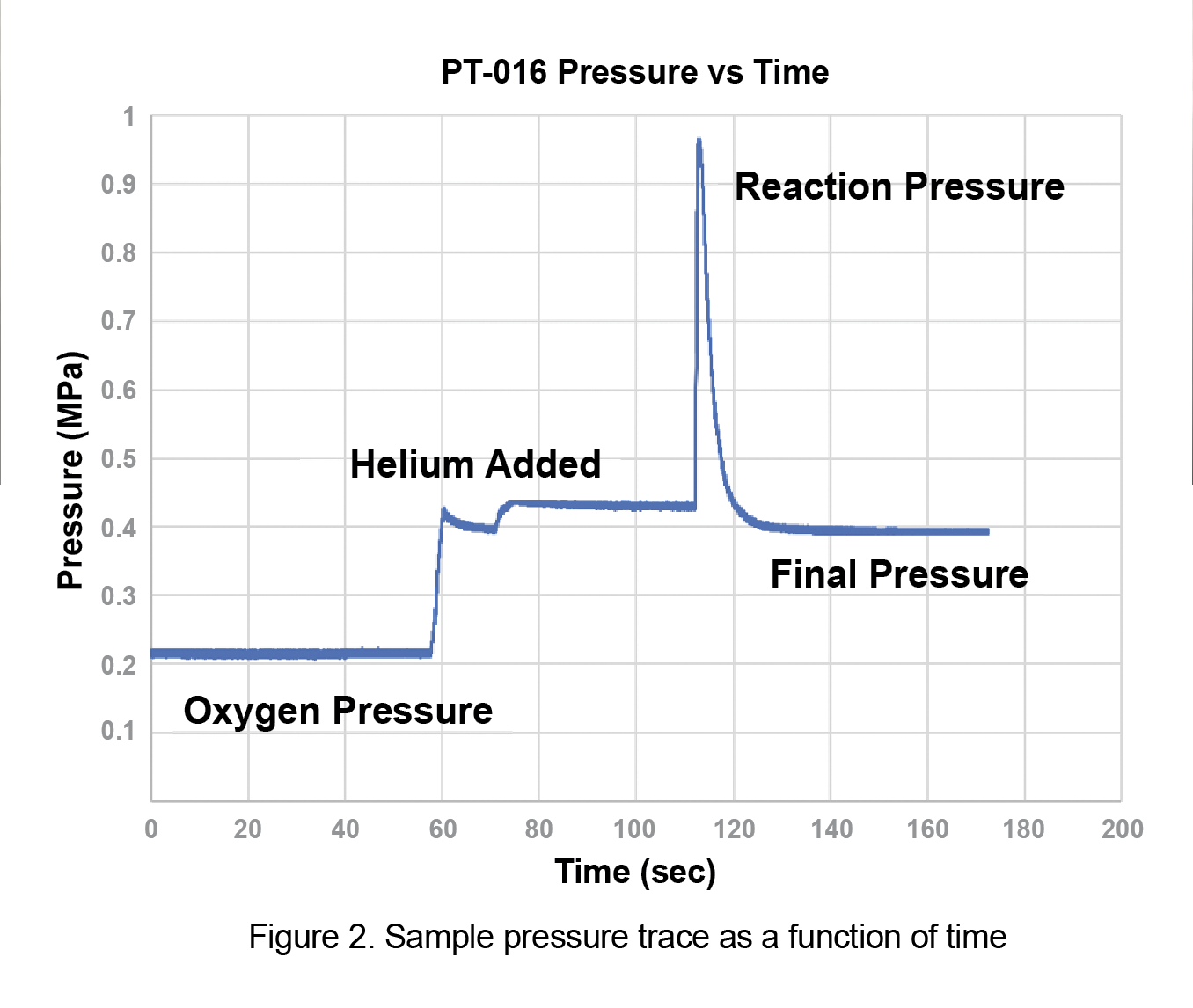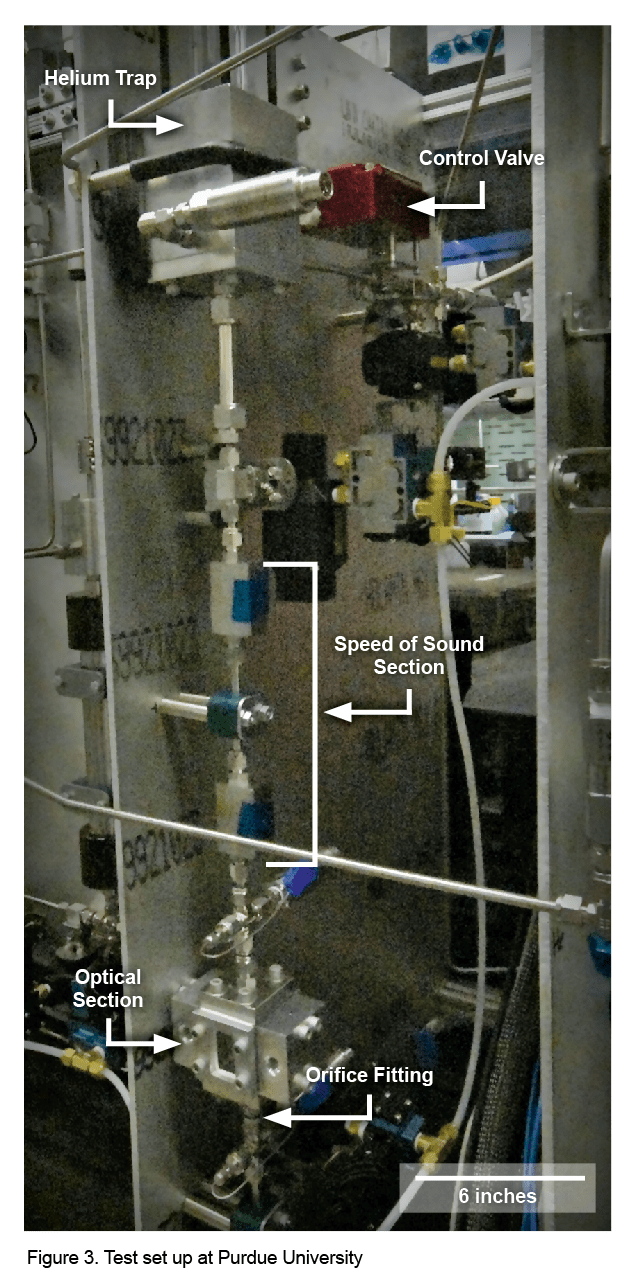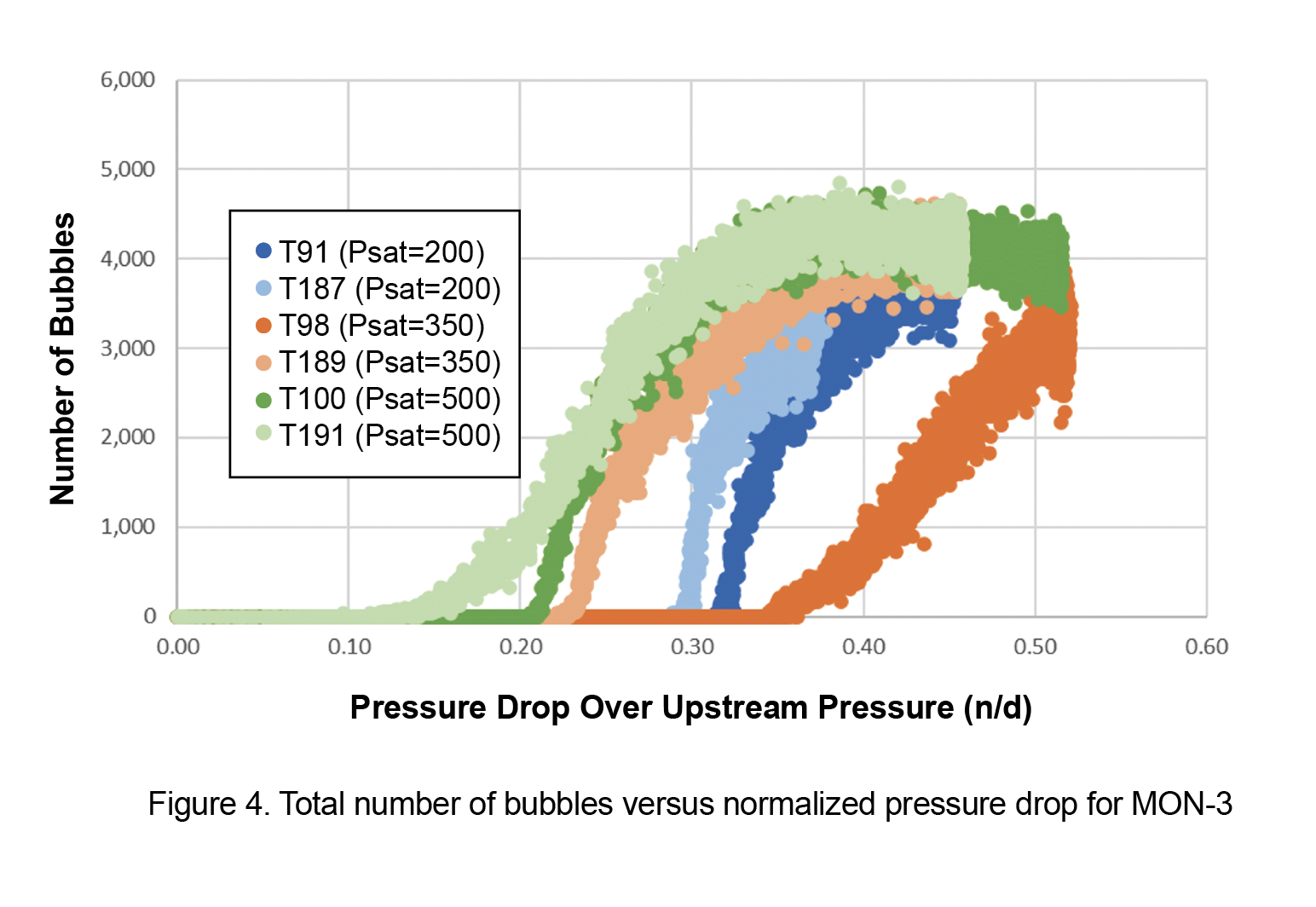This article is from the 2021 NESC Technical Update.
Understanding Effects of Helium Concentration on the TEA-TEB/Oxygen Ignition Process
Many gas generator (GG) cycle rocket engines (e.g., liquid oxygen/Rocket Propellant 1 (LOX/RP-1), LOX/liquid hydrogen (LH2) propellants) use a pyrophoric mixture of triethylaluminum-triethylborane (TEA-TEB) to achieve ignition. The TEA-TEB is often stored in canisters on the ground or inside the launch vehicle. The TEA-TEB is pressurized with helium (He), causing a burst disk to rupture and allow the TEA-TEB to flow into the GG. In the GG, the TEA-TEB mixture contacts the flowing LOX, combusts, and ignites the RP-1 or LH2. After the engine starts, there can be residual He in the TEA-TEB lines. When the engine is restarted, the residual He can mix with the TEA-TEB and act as a diluent as it flows into the GG chamber.
The physics of using TEA-TEB for engine ignition is understood, but the effects of He concentration on the ignition process have not been well studied. The role of GGs in several recent launch vehicle engine anomalies (e.g., hard starts, restart issues, etc.) has brought into question the dynamics of the TEA-TEB combustion process in an O2 environment with varying concentrations of He. In addition, GG engines using TEA-TEB ignition are susceptible to pressure pops/spikes and hard starts (i.e., unwanted ignition). The NESC and White Sands Test Facility (WSTF) experimentally determined the role of He concentration in the TEA-TEB/O2 combustion process to help in the start/restart sequences of engines and to avoid unwanted hard starts. The testing was performed at WSTF in a pressure vessel contained in a chemical fume hood. A special filling block tool was designed to load the syringe with TEA-TEB in a nitrogen (N2)-purged dry box and move it to the pressure vessel for maximum safety (see Figure 1 in the top banner). The TEA-TEB was then injected into the pressure vessel using the syringe injector, and pressure was recorded as function of time (see Figure 2). The test results demonstrated that the TEA-TEB/O2 reaction pressure increased and the combustion efficiency decreased with increasing amount of diluent (He and any excess O2). These results can be used to help guide the formulation of start sequences in TEA-TEB ignition systems.
Transient Evolution of Helium Pressurant in MON-3 and MMH
One of the problems encountered in the development of liquid bipropellant rocket engines is the occurrence of low-frequency instabilities, some of which lead to a phenomenon commonly referred to as chugging. Chugging is caused by a vibrational coupling of the propellant feed system with the combustion dynamics in such a way as to amplify any disturbance in pressure or propellant flow. Instabilities such as chugging have been issues for 60 years and required significant effort to mitigate during the Apollo Program. Chugging mitigations are often hardware specific and include avoiding the operating regimes that generate instabilities, changing line and manifold volumes, and other design considerations. It has been demonstrated that chugging can be significantly affected by the propellant pressurant, specifically He, transitioning into and out of solution.
The NESC recently completed an assessment to characterize the transient behavior of He evolution from mixed oxides of nitrogen 3% (MON-3) and monomethyl hydrazine (MMH). The testing was performed at Purdue University (see Figure 3). The pressure range investigated envelopes most of the current and historic spacecraft, which utilize hypergolic propellants. To distinguish between He bubbles and two-phase flow bubbles, both of which can manifest due to a pressure drop, tests were first conducted with fully unsaturated propellants provided by a piston tank. The remaining tests were performed with propellants that were fully saturated with He at the given temperature and pressure for each test. The data collected included the number and average diameters of the He bubbles in the test section (via video data and a bubble counting/sizing algorithm, see Figure 4) and the speed of sound downstream of the test section.
The results indicate that when plotted versus normalized pressure drop, the measured speeds of sound for saturated MON-3 and MMH collapse into linear relationships. The volume fraction of the He bubbles is a linear function of the normalized pressure drop for MON-3 and MMH until all the He evolves from solution. The He bubbles observed immediately downstream of the test section orifice persisted in the fluid a relatively large distance in the absence of additional pressure drop. Finally, the measured speeds of sound for saturated MON-3 and MMH agree with literature values. The data generated in this assessment should help propulsion system designers avoid the He evolution conditions associated with chugging, increasing life and reliability of propulsion systems.


























